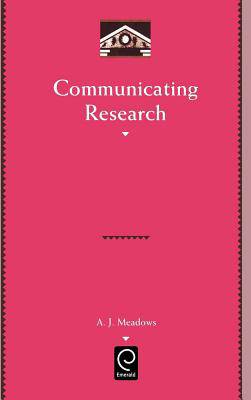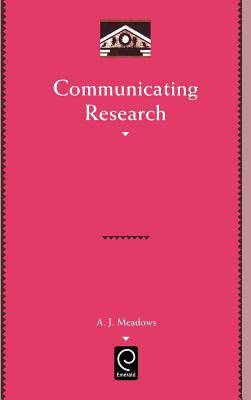
- Afhalen na 1 uur in een winkel met voorraad
- Gratis thuislevering in België vanaf € 30
- Ruim aanbod met 7 miljoen producten
- Afhalen na 1 uur in een winkel met voorraad
- Gratis thuislevering in België vanaf € 30
- Ruim aanbod met 7 miljoen producten
Zoeken
€ 206,45
+ 412 punten
Omschrijving
Communicating Research" explores how changing technologies affect academic research practices. The book begins with the rise of electronic media and fundamental changes in the dissemination of research. It then outlines the problems and concerns of researchers, librarians, and publishers: inadequacies of copyright laws, the rise of interlibrary loan practices, and the unchecked broadcast of working papers. These problems lead to a discussion of research practices across scholarly disciplines and an investigation of the biases and intentions of practitioners. The book includes historical data and observations on the current scene in order to make predictions about the future. "Communicating Research" draws conclusions about the ways that differing norms, such as the differences in the ways chemists and sociologists conduct, write, and publish their research, affect publication trends. The book also looks closely at the efficiency of publication strategies and their effectiveness in reaching the researchers' targeted audiences. Meadows uses two avenues to explore the communication of research findings. One is the medium used to convey the message; the other is the needs of the research community. He offers a solid base of analysis for understanding researchers, their biases, their assumptions about the communication, and the publishers. It explains variations in the reviewing processes for books and journals. It tailors communication and publishing insights for researchers, and offers superior historical information.
Specificaties
Betrokkenen
- Auteur(s):
- Uitgeverij:
Inhoud
- Aantal bladzijden:
- 264
- Taal:
- Engels
- Reeks:
- Reeksnummer:
- nr. 97
Eigenschappen
- Productcode (EAN):
- 9780124874152
- Verschijningsdatum:
- 2/12/1997
- Uitvoering:
- Hardcover
- Formaat:
- Genaaid
- Afmetingen:
- 158 mm x 237 mm
- Gewicht:
- 562 g

Alleen bij Standaard Boekhandel
+ 412 punten op je klantenkaart van Standaard Boekhandel
Beoordelingen
We publiceren alleen reviews die voldoen aan de voorwaarden voor reviews. Bekijk onze voorwaarden voor reviews.








